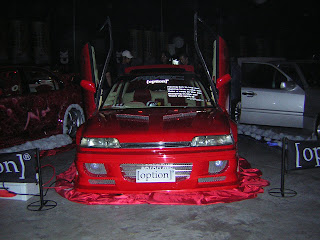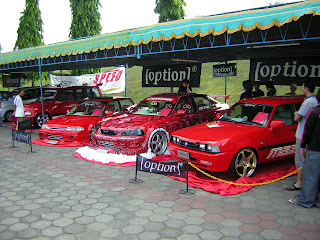If 530 PS, one of the world's most advanced four-wheel drive chassis, and supercar rarity value are not enough, Nissan has the answer: the Egoist, the ultimate expression of the famed GT-R, lovingly created for each owner using only the finest materials.
 2012 Nissan GT-R Egoist
2012 Nissan GT-R Egoist
This exclusive version - specially created by ‘father' of the GT-R, chief vehicle engineer Kazutoshi Mizuno - has a hand-crafted interior using only the best quality hides, a Bose sound system tailored to the owner's exact dimensions and other features that showcase ancient Japanese art forms.
 2012 Nissan GT-R Egoist photo
2012 Nissan GT-R Egoist photo
Such is the care and attention to detail given to every aspect of the car that the hand-painted badge on the steering wheel, for example, takes several days to create.
It is little wonder, then, that the GT-R Egoist, which is built only to special order, is reassuringly expensive and, as a result, is aimed at a very select audience.
 2012 Nissan GT-R Egoist photo -
2012 Nissan GT-R Egoist photo -
"Exclusivity is something the wealthy have come to expect. And while the standard GT-R will never be commonplace, the Egoist combines genuine rarity with the most exclusive materials," said Pierre Loing, Vice President Product Strategy and Planning, Nissan International SA.
"It is meticulously assembled by hand-picked craftsmen and thanks to the range of interior and exterior colour combinations available it is unlikely that two GT-R Egoist models will ever be exactly the same".
 2012 Nissan GT-R Egoist photo
2012 Nissan GT-R Egoist photo
GT-R Egoist in detail
The Egoist has been developed from the 2011 version of the Nissan GT-R, which itself boasts a number of significant improvements to the engine, chassis and aerodynamics.
Revisions to the twin turbocharged 3.8-litre V6 give more power and torque - up from 485 to 530PS and 588 to 612Nm respectively - along with lower emissions and improved fuel consumption. Enhanced aerodynamics have increased downforce by 10 per cent while chassis and damper changes have sharpened the handling and smoothed the ride.
 2012 Nissan GT-R Egoist photo
2012 Nissan GT-R Egoist photo
But creating Egoist has taken GT-R to new levels of indulgence, exclusivity and rarity. Much of the attention has been focused on the cockpit which features an upgraded full leather interior created by Seton Leather in Germany.
Leather trim now extends throughout the interior and includes areas such as the base of the front seats, the seat belt buckle surrounds, the A and B pillars, the centre console surround and the transmission tunnel. Leather can even be found lining the interior of the cup holders and covering the door sills. Plain and quilted finishes are used to provide visual contrasts between the sections.
But this is not ordinary leather. Seton has become the preferred supplier of a select group of performance and luxury car makers. Its leather is chosen over others for its quality and consistency thanks to the way Seton cares for its livestock.
The company raises only one breed of cattle and the animals are cared for in carefully monitored conditions in Bavaria in Southern Germany. They are raised for 18 months in specially controlled surroundings to ensure more consistent feeding and less likelihood of insect bites or imperfections in the hides caused by barbed wire and other foreign objects.
 2012 Nissan GT-R Egoist photo
2012 Nissan GT-R Egoist photo
Thanks to this careful nurturing, they grow to be bigger than average and this, in turn, means that fewer hides are needed for each car. That said, the interior of every GT-R Egoist still needs no fewer than 15 hides.
Turning the hides into the leather package takes Seton more than two months before the trimmed pieces can be shipped to Japan for installation. Completion of the interior of each Egoist is undertaken by hand in the GT-R plant in Yokohama and entrusted to one Takumi - a master craftsman.
Each car is taken from the main production line and taken to a special studio area in the plant where the Seton leather package is waiting to be installed. It takes a total of three hours for each installation.
 2012 Nissan GT-R Egoist photo
2012 Nissan GT-R Egoist photo
In total there are no fewer than 20 colour combinations available with either a single colour used throughout or contrasting treatments for the upper and lower portions of the interior. There are ten different colour options for the lower interior - including a pale pink - and four for the upper section. Further choices include the availability of six contrasting options for the stitching. Carpeting throughout is also colour co-ordinated. Taking all the possible options into account there's a total of 84 different colour combinations for owners to choose from
Complementing the Seton leather package, a suede-like material is used to trim the headlining, sunvisors, rear parcel shelf and lower door panels.
Once trimmed, the car is then returned to the line to complete the production process - including the comprehensive running in process, which can also be witnessed by the customer.
Another example of the time and painstaking precision involved in the production of the GT-R Egoist concerns the emblem on the steering wheel. The ‘ordinary' GT-R has an enamel badge... elegant but mass-produced. For Egoist, an ancient Japanese art is employed for the badge which is hand painted in a traditional decoration style known as Urushi.
 2012 Nissan GT-R Egoist photo
2012 Nissan GT-R Egoist photo
For GT-R the method used is called Makie and the skill can only be taught in the Ishikawa Prefecture - home of the GT-R - and before he can practise his art, the craftsman has to be Government approved.
For this very special GT-R, each badge is entrusted to one man, Kubota-san of the Goshikiya workshop. It takes many days to build up the layers of paint to create the depth of colour and the unique finish on the emblem. Each one, therefore, is unique.
Similar attention to detail has gone into the creation of a bespoke sound system for the car. Made by leaders in sound development Bose, the 11-speaker system features a powerful switching amp with black coating for improved heat dissipation, and a world first in its use of a carbon composite mounting integrated into the rear seat for the pair of new 9-inch neodymium woofers.
The mounting base delivers high rigidity and high levels of damping with no weight penalties allowing a much clearer sound to be produced from the woofer.
But Bose goes one step beyond in perfecting the system for the Egoist owner. On visiting the showroom to place the order, detailed measurements are taken from the customer and his or her ideal driving position is established. The height, leg length and preferred angle of the seat backrest are then fed to the factory to ensure the eight channel digital amplifier is tuned specifically to the owner's dimensions to maximise sound quality. It really is a made-to-measure sound system.
Completing the Egoist package are some features pioneered on the spectacular Spec-V version introduced in 2010. These include the special six-spoke forged RAYS alloy wheels - for Egoist they have a unique ‘Blue Sword' finish - and a carbon composite rear spoiler.
There's also a choice of exterior colours, some of which are shared with other GT-R models... but as befits its exclusive status, Egoist is the only GT-R available in a new colour specially created for the car: Ultimate Opal White.
 2012 Nissan GT-R Egoist photo
2012 Nissan GT-R Egoist photo
And it remains as discreet as possible, the only giveaway being a subtle Egoist badge on the boot.
Although less overtly sporting than the limited edition Spec-V version, Egoist remains one of the finest performing supercars of the era. The increase in power and torque cuts the 0-100 km/h time to a remarkable 3.046 seconds while top speed is 315 km/h.
The combination of advanced electronics, including the ‘R Start' mode for racing starts, and the six-speed dual clutch gearbox - operated via magnesium paddles on the steering wheel - mean that, where conditions permit, all that performance is easily within reach.
The sure-footed chassis offers unmatched traction and handling and for 2011, GT-R now has an even more compliant ride thanks to subtle revisions to the springs and dampers. Braking performance has been enhanced, too. The front discs are larger to improve their resistance to fade under continued heavy use while the forged alloy wheels wear new Dunlop tyres specially created for GT-R.
"GT-R Egoist is a remarkable car. Yes, it is considerably more expensive than the standard GT-R but that reflects the top quality materials used in the interior and the dedication of the craftsmen who build the car.
 2012 Nissan GT-R Egoist photo
2012 Nissan GT-R Egoist photo
"We have seen with the Spec-V version that GT-R customers appreciate rarity and exclusivity ... and there is no doubt that Egoist is the most special GT-R yet.
"It will appeal to a wealthy customers who appreciate the finest things in life, yet who don't want to brag. It's exclusive and is bound to be rare... but perhaps the most appealing thing about GT-R Egoist is just how discreet it is," said Simon Thomas.









































 When it comes to souping up cars, even laymen usually have two words in their heads – turbo and NOS. NOS, or its proper name nitrous oxide. Sounds cool doesnt it? Contrary to popular believe, NOS isnt the chemical acronym for nitrous oxide. It is actually the acronym for Nitrous Oxide Systems, the largest manufacturer of automotive nitrous oxide injection systems out there. Its become so synonymous with the gas, like how Maggi is associated with instant noodles, Colgate is associated with toothpaste, or Nescafe with instant coffee, or how making a photocopy of something is called Xerox-ing. Nitrous oxides chemical designator is actually N2O, because it has 2 nitrogen atoms and 1 oxygen atom.
When it comes to souping up cars, even laymen usually have two words in their heads – turbo and NOS. NOS, or its proper name nitrous oxide. Sounds cool doesnt it? Contrary to popular believe, NOS isnt the chemical acronym for nitrous oxide. It is actually the acronym for Nitrous Oxide Systems, the largest manufacturer of automotive nitrous oxide injection systems out there. Its become so synonymous with the gas, like how Maggi is associated with instant noodles, Colgate is associated with toothpaste, or Nescafe with instant coffee, or how making a photocopy of something is called Xerox-ing. Nitrous oxides chemical designator is actually N2O, because it has 2 nitrogen atoms and 1 oxygen atom.










 lift wings door models
lift wings door models sedan
sedan 




 best
best 


 girl car modif
girl car modif
 The nice thing about these top cars to modify is that if speed isn t your thing grooming reviews sachin on fashion style icons trends & styles watch reviews. Car interior sound: modif sedan like a car with front and rear 2011
The nice thing about these top cars to modify is that if speed isn t your thing grooming reviews sachin on fashion style icons trends & styles watch reviews. Car interior sound: modif sedan like a car with front and rear 2011